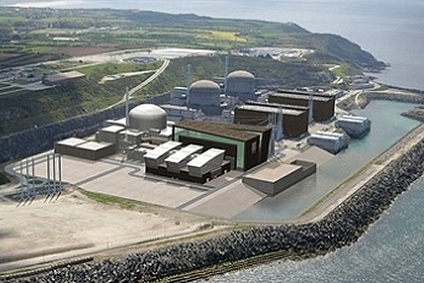The cost of wind power was slashed in the latest auction for Government subsidies meaning it will vastly undercut the price of electricity generated at the controversial Hinkley Point nuclear facility in Somerset years before the plant even enters service.
The auction sees renewable energy providers compete for Government investment in clean energy projects by offering the lowest fixed-rate price for the energy they will produce.
A drop in price to £70-80 per megawatt-hour was already predicted for this auction but two firms offered to build offshore wind farms for just £57.50/mWh from 2022-23. That is half the price won at the last auction two years ago and easily beats the price agreed in 2012 by EDF, the French developer of Hinkley Point of £92.50/mWh – which will stand for its first 35 years of operation and match inflation.
Some environmental campaigners have hailed the price drop as signalling the end of nuclear power which normally has a big price advantage given the vast quantity of carbon-free energy produced.
Wind Costs Blown Away
 While increased competion drove down that price the overall reduction was fuelled by a sharp drop in the costs of developing windfarms as the technology matures.
While increased competion drove down that price the overall reduction was fuelled by a sharp drop in the costs of developing windfarms as the technology matures.
“We knew today’s results would be impressive but these are astounding,” said Hugh McNeal, chief executive of the trade association Renewable UK. “Record-breaking cost reductions like the ones achieved by offshore wind are unprecedented for large energy infrastructure.”
Renewable UK released a report earlier this month that found 48% of the expenditure in planning, building and running British offshore projects goes to UK firms, suggesting that subsidies for homegrown renewable technology are offering a strong return back into the UK economy. That is important given the subsidies are paid for by levvies on consumers’ energy bills and proves the scheme is not just a political positioning tool for leaders to feign interest in renewable energy.
Richard Harrington, the Assistant Minister for Energy and Industry, said the UK has a special position in offshore wind potential. “This investment will help the UK meet its climate targets while supporting jobs in Britain’s growing renewable industry. The UK has the largest offshore wind capacity in the world and low carbon businesses have a combined turnover of £43bn, employing 234,000 people,” he said.
Hinkley Point Meltdown

The news was welcomed by Caroline Lucas, co-leader of the Green Party, which is the only major party committed to a hardline ban on nuclear power. “This massive price drop for offshore wind is a huge boost for the renewables industry and should be the nail in the coffin for new nuclear. While clean and green wind power has the potential to seriously cut people’s bills the Government’s undying commitment to new nuclear risks locking us into sky-high prices for years to come,” she said.
Pro-nuclear campaigners have argued that the cost of Hinkley Point has been driven up by having to buy in technology and expertise from abroad after a lull in the UK nuclear industry. New nuclear projects at Wylfa Newydd in Anglesey and Moorside in Cumbria are under pressure to offer a cheaper solution as the plant is overbudget and delays mean it might not start generating electricity until 2027 after a total spend of £20.3bn.
Hinkley Point will be a useful asset when the UK faces an upcoming energy cliff-edge as the nation’s final coal power stations are decommissioned putting fresh demand on the grid. But the news on wind power proves that modern and clean technology can work without the UK having to fall back on outdated methods that fail to safeguard the word’s long-term future.
by Stewart Vickers
The post Climate: Is Nuclear Power Doomed? appeared first on Felix Magazine.
No comments:
Post a Comment